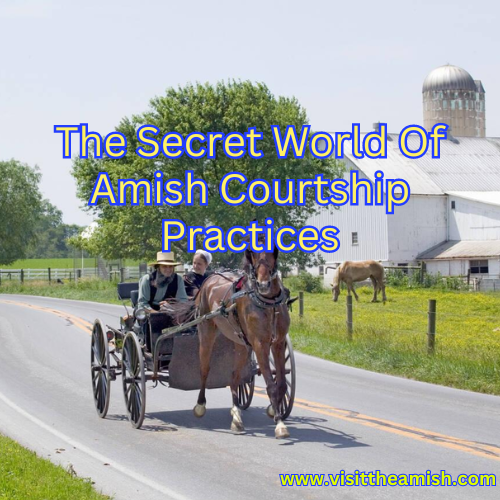Princeton Amish Country Store, 101 Mechanic St, Princeton, WI 54968
Nestled in the heart of Princeton, Wisconsin, the Princeton Amish Country Store stands as a testament to the enduring appeal of handcrafted goods and traditional values. Located at 101 Mechanic St, this charming establishment has become a cornerstone of the local community and a destination for those seeking authentic Amish-made products[1].
The store’s exterior, with its simple yet inviting facade, gives visitors a hint of the treasures that await inside. As you step through the door, you’re immediately enveloped in an atmosphere that harkens back to a simpler time. The rich scent of wood and the subtle aroma of homemade goods create an ambiance that is both comforting and nostalgic.
One of the store’s main attractions is its impressive selection of Amish furniture. Handcrafted with meticulous attention to detail, each piece tells a story of skilled craftsmanship passed down through generations. From sturdy dining tables to elegant bedroom sets, the furniture on display showcases the Amish commitment to quality and durability. Customers can often be seen running their hands along the smooth, perfectly finished surfaces, marveling at the expert joinery and solid construction that are hallmarks of Amish woodworking[5].
For those looking to enhance their outdoor living spaces, the Princeton Amish Country Store offers an extensive range of outdoor lawn furniture. Adirondack chairs, picnic tables, and garden benches are just a few of the items available, each designed to withstand the elements while providing comfort and style. These pieces are particularly popular among local homeowners and vacationers looking to outfit their patios or lakeside retreats[5].
The store’s commitment to quality extends to its mattress selection. Recognizing the importance of a good night’s sleep, the Princeton Amish Country Store offers a variety of mattresses that combine traditional craftsmanship with modern sleep technology. Customers can test out different models, ensuring they find the perfect balance of support and comfort for their individual needs[5].
One of the most diverse and enticing sections of the store is its grocery department. Here, visitors can find a wide array of Amish-made food products that are difficult to source elsewhere. Jams and jellies made from locally grown fruits, homemade pickles, and preserves line the shelves, their colorful jars creating a vibrant display. Freshly baked bread, still warm from the oven, fills the air with an irresistible aroma. Wheels of artisanal cheese, cured meats, and homemade noodles offer a taste of authentic Amish cuisine[2].
For those with a sweet tooth, the store’s selection of candies and confections is a true delight. Hand-pulled taffy, creamy fudge, and old-fashioned hard candies are displayed in glass jars, tempting customers of all ages. The store also stocks a variety of baking ingredients, allowing home cooks to recreate some of the Amish culinary magic in their own kitchens[2].
The Princeton Amish Country Store is more than just a retail space; it’s a celebration of Amish culture and craftsmanship. Throughout the store, visitors can find an array of handmade crafts that showcase the artistic talents of the Amish community. Intricately stitched quilts hang on display, their bold patterns and precise needlework drawing admiration from quilting enthusiasts and casual observers alike. Hand-woven baskets, delicate pottery, and carved wooden toys offer unique gift options for those seeking something special[5].
The gift section of the store is a treasure trove of one-of-a-kind items. From scented candles and soaps to decorative signs and wall hangings, there’s something to suit every taste and occasion. Many of these items feature inspirational messages or rustic designs that reflect the values and aesthetics of Amish culture[5].
One of the most remarkable aspects of the Princeton Amish Country Store is its commitment to preserving traditional methods of commerce. In an age of digital transactions and self-checkout lanes, this store offers a refreshingly personal shopping experience. The knowledgeable staff, often dressed in traditional Amish attire, are always on hand to answer questions, offer product recommendations, and share insights into the craftsmanship behind each item.
The store’s operating hours reflect the Amish dedication to balancing work and faith. Open Monday through Saturday from 10 am, the store closes on Sundays, honoring the Amish tradition of observing the Sabbath as a day of rest and worship[1]. This schedule serves as a gentle reminder to visitors of the importance of taking time to slow down and appreciate life’s simpler pleasures.
The Princeton Amish Country Store’s location at 101 Mechanic St places it at the heart of Princeton’s historic downtown area. This prime location makes it easily accessible to both locals and tourists exploring the charming streets of this Wisconsin town. The store’s presence has contributed significantly to Princeton’s appeal as a destination for those interested in experiencing Amish culture and craftsmanship[3].
For visitors planning their trip, the store’s phone number, (920) 481-0194, is a valuable resource. Customers can call ahead to inquire about specific products, check store hours, or get directions. The friendly staff are always happy to assist, embodying the warm hospitality that the Amish community is known for[4].
The impact of the Princeton Amish Country Store extends far beyond its physical boundaries. By providing a marketplace for Amish-made goods, the store plays a crucial role in supporting the local Amish community. It offers a bridge between the Amish way of life and the broader public, allowing the Amish to maintain their traditional practices while still participating in the modern economy.
Moreover, the store serves as an educational resource for those interested in learning more about Amish culture. Through the products it sells and the interactions with its staff, visitors can gain insights into Amish values, craftsmanship, and way of life. This cultural exchange fosters understanding and appreciation, breaking down barriers and challenging stereotypes.
The Princeton Amish Country Store also contributes to the local economy of Princeton. As a popular destination, it draws visitors from surrounding areas and even from out of state, boosting tourism and supporting other local businesses. The store’s success has helped to revitalize Princeton’s downtown area, encouraging the preservation of historic buildings and the opening of complementary businesses.
Environmental consciousness is another aspect that sets the Princeton Amish Country Store apart. The Amish philosophy of stewardship and simplicity aligns well with modern sustainability efforts. Many of the products sold in the store are made from natural, renewable materials and are designed to last for generations, offering an alternative to the disposable consumer culture prevalent in many mainstream stores.
The store’s commitment to quality and durability is particularly evident in its furniture section. Each piece is built to withstand the test of time, both in terms of style and structural integrity. This approach not only ensures customer satisfaction but also reduces the need for frequent replacements, ultimately lessening the environmental impact of furniture production and disposal.
In the grocery section, the focus on locally sourced, minimally processed foods aligns with the growing interest in farm-to-table eating. By offering these products, the Princeton Amish Country Store supports sustainable agriculture practices and helps to reduce the carbon footprint associated with long-distance food transportation.
The store’s success has not gone unnoticed in the broader business community. It serves as a model for how traditional craftsmanship and values can thrive in the modern marketplace. The Princeton Amish Country Store demonstrates that there is still a strong demand for high-quality, handmade goods in an era of mass production and automation.
As the world becomes increasingly digital and fast-paced, the Princeton Amish Country Store offers a refreshing counterpoint. It invites visitors to slow down, to appreciate the skill and care that goes into handcrafted items, and to connect with a simpler way of life. This appeal has resonated with a wide range of customers, from those seeking to furnish their homes with timeless pieces to those looking for unique gifts or authentic culinary experiences.
The store’s website, while maintaining a simple design in keeping with Amish values, provides essential information for potential visitors. It offers a glimpse into the types of products available and provides contact details for those seeking more information. However, true to the Amish preference for personal interaction, the website encourages visitors to experience the store in person rather than offering online shopping options[1].
Looking to the future, the Princeton Amish Country Store faces the challenge of balancing tradition with the evolving needs of its customers. While staying true to its roots in Amish craftsmanship and values, the store may need to adapt to changing consumer preferences and technological advancements. However, if its current success is any indication, the store is well-positioned to navigate these challenges while maintaining its unique character and appeal.
In conclusion, the Princeton Amish Country Store at 101 Mechanic St, Princeton, WI 54968, is more than just a retail establishment. It’s a cultural institution, a supporter of traditional craftsmanship, and a bridge between the Amish community and the wider world. Whether you’re in search of high-quality furniture, delicious homemade foods, unique gifts, or simply a glimpse into a different way of life, this store offers an experience that is both enriching and memorable. As it continues to serve the community and visitors alike, the Princeton Amish Country Store stands as a testament to the enduring appeal of quality, simplicity, and tradition in our modern world.
Citations:
[1] https://princetonamishcountrystore.com
[2] https://princetonamishcountrystore.com/groceries
[3] https://www.mapquest.com/us/wisconsin/princeton-amish-country-store-456978322
[4] https://www.yelp.com/biz/princeton-amish-country-store-princeton
[5] https://princetonwi.com/princeton-amish-country-store/
Like this:
Like Loading...


















































































